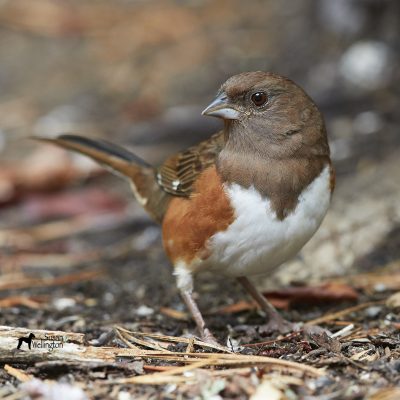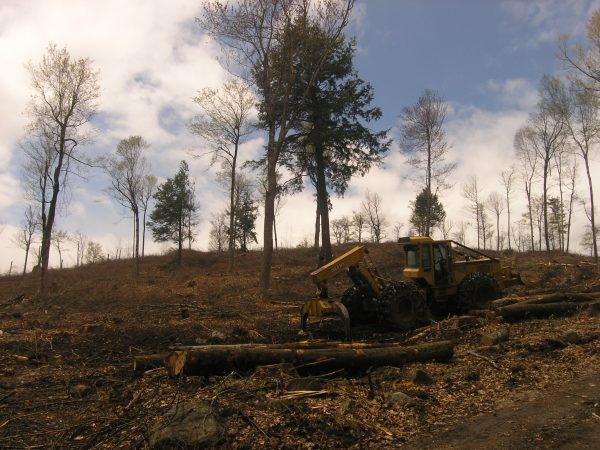By Tom Lautzenheiser, Central/Western Regional Scientist
Mass Audubon’s Old Baldy Wildlife Sanctuary in Otis offers visitors with a rare view in south Berkshire County: a near 360-degree panoramic view from the summit of its eponymous hill. The landscape below is nearly entirely forested, with few interruptions. The clearing at the summit itself was expanded around 2000, when a previous landowner sought to subdivide the property, and at the same time the forest growing on Old Baldy’s sides was heavily logged. The resulting overlook is a gem in the Berkshires.
The forest harvesting, while completed for economic return, resulted in a conservation benefit because it created much needed habitat for young-forest associated wildlife species—many of whom are experiencing steep long-term population declines throughout the region due largely to habitat loss. In the years following the harvest young-forest species like Chestnut-sided Warbler, Indigo Bunting, White-throated Sparrow, and Eastern Towhee, thrived in the thicket.

Female Eastern Towhee © Susan Wellington
However, in recent years the canopy has been closing as the trees grow, and this crucial habitat has been disappearing.
With the successional clock ticking, Mass Audubon sought and was awarded a Habitat Management Grant from the state Division of Fisheries & Wildlife, which funded the maintenance and expansion of the clearing at Old Baldy in the early spring of 2017.

Old Baldy following the 2017 clearing of trees to create habitat
The loggers did their work well, though the transition appears shocking, with stumps and downed tops strewn as after a storm, and the remnant trees seeming thin and lonely over the slash. Importantly, however, increased sunlight on the ground will stimulate a flush of sprouting, and within a growing season or two the cleared area should be lush with brambles and tree sprouts, again forming the dense cover favored by many species of conservation concern. Within a few years the site will again be prime habitat supporting populations of young-forest birds. Many other wildlife species, including white-tailed deer and black bear, will also find food and shelter in the cleared area.
Until the dense regrowth sprouts up, visitors may notice large brush piles scattered throughout the site. These brush piles are supplemental habitat for New England cottontail, our native rabbit species that is of critical conservation concern.
Mass Audubon’s decision to maintain and expand a forest clearing at Old Baldy was not made lightly, but was made in recognition that without concerted effort, populations of dozens of wildlife species reliant on young-forest habitat will continue to dwindle in the state. Just as the views from the summit of Old Baldy were beginning to be obscured by maturing trees, habitat quality for young-forest species was also declining, and active intervention was necessary to secure the area’s value for these species.
It was time for Old Baldy to get a haircut. And like a haircut, the trees at Old Baldy will grow back, without substantially affecting the land underneath.

